
Founded by sound composers themselves, Frank Bretschneider (Komet) and Olaf Bender (Byetone), these gentlemen were joined by multimedia artist Carsten Nicolai (noto) in 1999 creating a powerhouse attention to detail with award-winning minimalist design, both exquisite and practical, based on geometries and various architectural structures. Aurally immersed, Raster-Noton is the house that invented the explosion of microsound. I took some time to catch up with Olaf Bender just prior to a performance at the Sensoralia Festival in Rome.
::..:::…..:..::….:::::..:::..:::::::……:::…::.:::….::::..:..:::…::…….:::::
IGLOO: It’s quite a pleasure to have the chance to speak with you. In recent years I have enjoyed your sound work and always look forward, with anticipation, to see the latest developments out of Raster-Noton. How are things with you today? What is new in your sound universe?
Olaf Bender (Raster-Noton Music): Our emphasis is more on a permanent stable work. Therefore we concentrate on a pretty limited circle of artists. At the moment we produce the Raster Post series. Furthermore we are engaged in preparing several live presentations in the field of art exhibition (eg. La Batie in Geneva, September 2004) and sound installation.
IGLOO: I see, the limitations make for streamlining ideas and output. Where did the Raster-Noton name come from? Do you have a specific mission/vision statement as such?
OB: Raster Noton is an amalgamation of Rastermusic (the name of the first label) and Noton (the second label involved). Raster in German has quite a lot different meanings (eg. structure / patterns, digital resolution in sound and graphics). Noton is an anagram, and you can divide it into: no-ton (meaning no sound) or not-on (switched off).
IGLOO: Structured silence – it gives me a nice chill. I want to ask, with the extremely innovative packaging designs on many of your CD and book projects that you produce, can you explain how your collaborations began with Carsten Nicolai and the ensuing merge between Rastermusic and Noton.Archiv all took place in 1999 and how it changed the way you initially set out doing business, if at all.
OB: The design and packaging is mostly done by me. Sometimes the artists are involved in some aspects of it but in the end I am responsible.
Carsten owned the label Noton and he produced his first CD at our Rastermusic studio. We realized that there were a lot of parallels and we offered Carsten to release this CD on Rastermusic. We worked together more and more and eventually we decided to merge.
Today Raster Noton is Carsten’s and my label, so we work together as a team which often includes Frank Bretschneider.
IGLOO: Well, I appreciate your continuing a series, so connected to its graphic aspects, the lines, dots, monochromatics and all. Can you tell me what connection your label is making between sound and science?
OB: Difficult to answer. We are no real scientists. But we are especially interested in the abstract scientific process of production and we try to use these processes and their certain aesthetics. Sound in the physical sense means energy, acoustics and oscillations – and this oscillating is the connection between sound and other forms of energy (eg. light).
IGLOO: The natural connections between the arts and sciences is my vocation, and has its own language. I see the elements come together in gravity, depth of field, color, shape and frequency etc. Back to design for a moment – the 20′ to 2000 was a brilliant collection if I may say so (my copy is one of my prized collections). Can you talk about how that came together and was launched? I remember hearing that for overall packaging design it won an award and a host of design copycats emerged. Can you respond to this?
OB: The main idea behind it was to understand a music product, a CD, like a printed periodical (eg. magazine). We wanted to present a series created by artists who seemed important to us. So in advance we told the artists to give us a personal, temporary statement of their development. Each artist knew at the beginning of 1999, which month their release would be on and the only restriction was the length of 21 minutes (for the 21st Century). No other rules. They could deliver whatever they wanted. They had total freedom to decide what to bring.
Following the idea of a printed magazine, we sold the 20′ to 2000 series like a newspaper subscription. The customers had to book and pay in advance and got one CD each month. The only individual thing in this series is the music. So design and packaging should only support this idea and function only as package holding the CDs together. When the series was completed, the subscriber got a magnetic kit to attach all CDs together.
I am not sure if 20′ to 2000 won a design award. But we won the Golden Nica Prix Ars Electronica, for digital music.
IGLOO: That must be the award I was thinking of. The idea of a subscription series is unique and not used all that often, but enables the buyer to purchase a whole body of work (ie: Asmus Tietchens reissues on Die Stadt, Fällt’s invalidObject Series, Merzbow on Soleilmoon and Fabric’s DJ series). This has an inherent element of surprise for the audience. Is this a practice you will revisit and can you talk about the impact that such a series would have on you if you were the audience?
OB: The idea behind the subscription thing is that the audience is directly involved in the production process of the series, part of it. They experience the growth of the series. They are not passive consumers getting a ready for a presented / finished product. At the beginning the final product was pretty open, nobody (artists, producers, audience) knew exactly, what it would look like. So there was certain tension during the subscription period for the clients as they didn’t know what to expect. For me this would be a reason to subscribe to such a series.
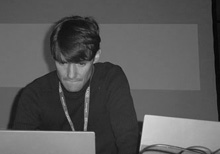
IGLOO: In my opinion both having the audience part of the interactive process and leaving selection more a mystery, more improvised so to speak, have their merits – I think you have accomplished both ends here.
Where is minimalism today? What does it say since Ellsworth Kelly brilliantly developed his single color, shaped canvases or John Cage first prepared a piano or the reference sources for Music for Airports? Does the aesthetic of a younger generation of musicians relate to this elongated history of sound/art dating back to the early 20th Century? What artists are making an impact in this field today – do you have any emerging favorites?
OB: Minimalism to me does not mean a kind of style following a certain development, to me it is an general attitude in life. Minimalism in regard to music has a certain history. So there always will be retrospections to previous decades of development. I am not too much inspired by minimalist musicians rather by other fields of art like architecture, design, fine arts and most importantly sciences.
IGLOO: This fusion between the arts is fluid and strong. In less than a decade, can you describe how electronic music has changed and developed? How do you feel Raster-Noton has become associated with the emergence of the microsound movement? I remember a compilation disc on Caipirinha called Microscopic Sound –in essence, did your colleagues help invent the basis for clicks and cuts?
OB: During the last ten years the most important development was the switch from using heaps of machines to produce the sounds towards the single digital computer. Therefore today music sounds digital and clicks and cuts are only an expression of this development.
For Raster Noton, computers were always an important basis for creating music as none of us has a classical musical education. Always technology influenced the development of aesthetics. So today the computer is our instrument and we try to create a computer typical sound. As we are part of this development / movement we hope to have had a certain impact on it.
IGLOO: You have produced a small series called Limited. With four items to date, is this something you release once a year? Can you describe what this is about and if this collection will continue? I had seen one of Carsten’s limited vinyl records on sale at Sonar this year, was that part of this body of work or from the Clear series?
OB: We must admit that the products found on our web shop under the category Limited are not a certain series with rules behind it. So it is not intended to release a new product each and every year. It rather depends on our working scheme. Releases such as frequencies or new forms are just single projects, temporarily available in regard to exhibitions or other events. There is no connection between these imprints. Furthermore limited means that there are just a certain number of copies to sell, and then the edition is finished.
IGLOO: Raster-Noton has released three book publications that use elements of typography, overlays, die cuts, and other graphic elements that I am sure make them quite costly to produce. Yet, they are certainly one-of-a-kind works of fine design. Can you talk a bit about choice of materials and are these self-published or do you work with a publishing house/printer? What is the edition on each volume and will you continue to publish this series?
OB: As we are not a label restricted to music, rather a collective of artists using Raster Noton as a platform, we don’t stick only to sound. So Carsten is a fine artist, I am a typographer and so I do the publishing of the books. As the publisher we have to cover most of the costs of the books.
In general, publishing books is expensive compared to CDs. But I mostly use commonly available materials; there is nothing very special regarding the material. I think the mixture of materials and processing is the most important thing.
IGLOO: Very true. What do you think of MP3 and CDR technologies and their relationship to the current digital scene?
OB: It is big progress when you can compress huge sound files to smaller ones and reduce so the capacity of memory is needed.
MP3 and CDR are technological developments which have not much to do with the development of music as such. For us, MP3 is a good tool to exchange files via Internet and this was the original idea.
IGLOO: I have noticed that some of the artists on your label also record for other like labels 12K/Line, Spekk, Mille Plateux and others. What makes these imprints unique, what separates their overall mission? Does releasing music on other labels open up to new audiences or different recording opportunities? What is the relationship between label and artist in the world of independent electronic music?
OB: The label scene is a small one. It is almost like a network. Labels and their owners know each other. Most of them are friends. There are lots of reasons. There are no contracts limiting an artist to only one label. Artists try to expand their field or the production of a CD fits better into the scheme of a certain label than to another. Sometimes artists produce lots and therefore need to go to another label.
I cannot speak about the differences the artists see between the labels. Therefore you would need to ask the artists. From my experience I would say it is nice and interesting to test new labels, new people, to get new influences. Sometimes there are financial reasons but they are probably not as important.
In general, it is not too bad when you can recognize an artist, doesn’t matter on what label they release. I get rather suspicious when an artists works differs too much in the process.
IGLOO: Under the moniker of Byetone you have been recording since 1999. Can you talk about that project as opposed to other sound collaborations you have been involved in? What is the basis for your sound and how do your source your ideas? What can you tell us about yourself, some of your personal interests and hobbies? Is managing Raster-Noton your full-time job?
OB: My first solo release was in 1999. Before that I was involved in the releases of Product and Signal. As I was rather used to working in a team it took quite a while until I released a solo CD.
Whenever I use a computer, it doesn’t matter in what field, typography or sound creation, I work with symmetries, proportions and modular structures. When I create music, the whole thing is pretty abstract. I don’t use any samplings. I get my ideas from each field of life. I like to collect older things, things that have been used already. I often get my inspirations from these items. When I have to travel long distances I often read mathematical riddle magazines. I am not really interested in the riddles itself, but find interesting details. But I am a lazy bloke regarding the music as managing the label is a full time job and doing the layout, searching materials, packaging takes a lot of time.
IGLOO: Haa, haaa. It doesn’t sound like one ounce of laziness to me. I recently have been connecting to sound/music created with instruments like barcode readers, airbrushes and other mechanical devices designed for purposes other than music. Outside of using the computer – do you use other instruments to create your sound?
OB: I don’t use only computers for creating my sound. I have got synthesizers and field recording devices as well. So the barcode reader thing sounds really interesting to me. But I don’t want to express certain moral attitudes / statements by using it.
IGLOO: The more tools of the trade, the wider the spectrum of sound. Speaking of which, do you have any upcoming projects or final thoughts to share?
OB: At the moment we are preparing an installation for an exhibition at La Batie Festival in Geneva. Running simultaneously will be concert nights by Raster Noton and I hope later we can document this work in a new book.
IGLOO: Well, I wish I were on the other side of the world to be there and experience this but will wait for the next chapter so to speak.
OB: I also would like to be on the other side of the world. ;)
::..:::…..:..::….:::::..:::..:::::::……:::…::.:::….::::..:..:::…::…….:::::







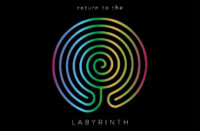




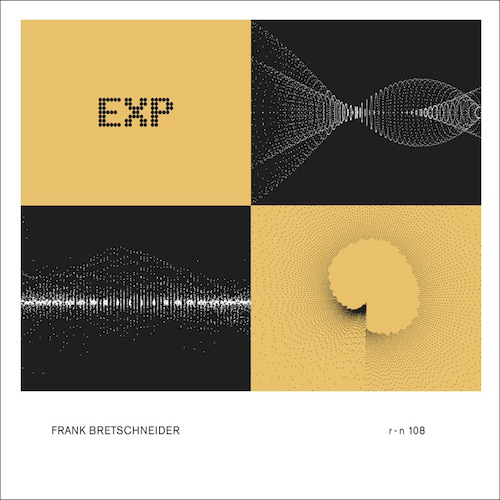
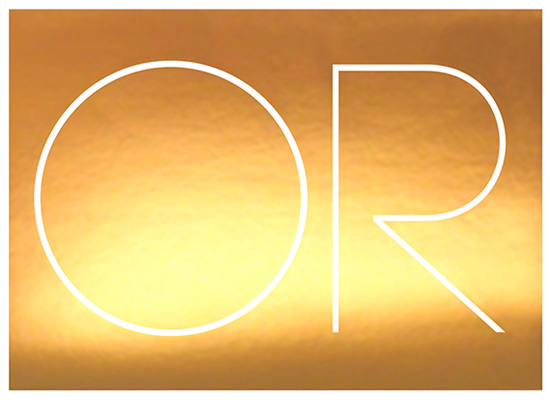
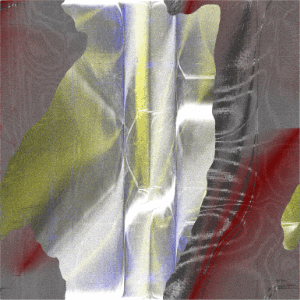


![Luke’s Anger :: Ceiling Walker EP (Love Love) — [concise]](https://igloomag.com/wp/wp-content/uploads/2025/04/lukes-anger-ceiling-walker-vinyl_feat-75x75.jpg)

![Ndorfik & madebyitself :: Solos EP (People Can Listen) — [concise]](https://igloomag.com/wp/wp-content/uploads/2025/04/ndorfik-madebyitself-solos_feat-75x75.jpg)





